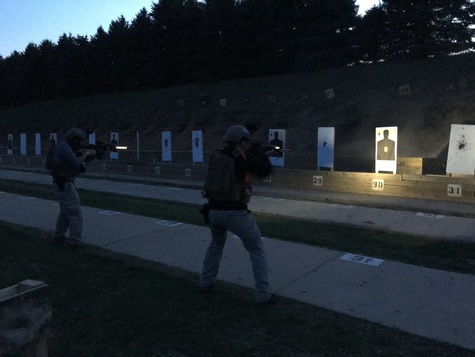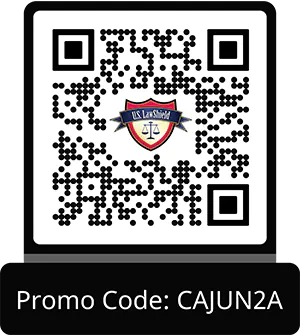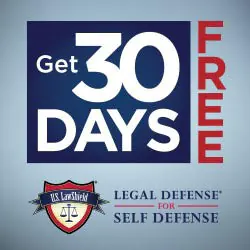Learn to See the Light: Low-Light Firearms Training You Can Use

Low light class with Cajun Arms, West Chester, PA
Training in daylight on a square lane is useful — but most real defensive encounters don’t happen at noon with perfect visibility. If you keep a firearm for self-defense or carry concealed (CCW), learning how to use light with your gun is essential. At Cajun Arms in West Chester, PA, we teach low-light tactics with both weapon-mounted lights and handheld flashlights so our students can identify threats, preserve legal decision-making, and gain a decisive advantage when visibility is poor.
Why Low-Light Training Matters for CCW & Concealed Carry Holders
Criminals prefer darkness. Statistically, more serious assaults and officer-involved killings occur at night. Yet few civilian carriers or even many police officers receive structured low-light training. For CCW holders, the gap between daylight competence and night performance can be life-threatening.
Low-light training is about three things:
-
Identification — confirming the source of the threat before you press the trigger.
-
Tactical advantage — using light to disrupt the attacker’s vision and buy time.
-
Legal foundation — ensuring you can justify a use-of-force decision by showing you positively identified a deadly threat.
Without clear visual cues, making a split-second lethal decision is both dangerous and legally risky.
Light Options: Weapon-Mounted vs. Handheld Flashlights
Weapon-Mounted Lights (WMLs)
WMLs allow you to present a firearm and light simultaneously, which can simplify sight picture and retention. They’re ideal for situations where you intend to deliver immediate, aimed fire. Training focuses on:
-
Light-on-sight acquisition and sighting with white light,
-
Retention and muzzle management during dynamic movement,
-
Transition drills (holster, reload, reload with light), and
-
Legal implications of illuminating someone and delivering force.
Handheld Tactical Flashlights
Handheld lights give more control of light placement and can be used to illuminate areas your weapon can’t safely point at. Techniques we teach include:
-
FBI/steady-on methods to identify hands and objects,
-
Harries / Chapman styles for weapon-light combinations so you can keep the light while presenting a pistol, and
-
Two-person tactics for vehicle or home defense where one occupant holds the light and another the firearm.
Both tools require specific rehearsal — you must train with the exact light and holster configuration you carry.
Practical Low-Light Techniques You’ll Practice at Cajun Arms
We integrate live-fire, laser-trainer, and dry-fire work. Examples of drills and skills we run:
Identify First, Shoot Second
Shine light on the face and hands — not just the torso. A face/hand presentation reveals whether the suspect holds a weapon (phone, keys, knife, gun). In class we demonstrate how a 600-lumen flashlight can temporarily blind an assailant and give you time to assess and move.
Flashlight Disruption Drills
Controlled light in the attacker’s face can degrade their visual capability for 1–3 seconds — enough time to move to cover, call 911, or deliver a single, decisive shot if lethal force is justified. We practice drawing, firing one accurate shot, and redistributing light and position.
Movement & Light Management
You’ll learn to move off the “X,” use angles of approach, and manage your light while moving — all under instructor supervision. This includes low-light room entries, vehicle approaches, and decision drills for family scenarios.
Dry-Fire and Laser Trainer Integration
Low-light skills require repetition. We use laser trainers and dry-fire practice to teach safe trigger manipulation, light-to-sight acquisition, and consistent follow-through without live ammo.
Safety, Legal, and Practical Considerations
-
Always practice low-light skills without live ammunition until your mechanical manipulations are smooth. Use inert training cartridges or laser trainers for safety.
-
Know your local laws about use of force and illumination — identifying a threat clearly helps both tactical and legal outcomes. Consider legal protection programs such as U.S. LawShield for post-incident guidance.
-
Train with the gear you carry. Red dots, weapon lights, holsters, and carry positions change how you operate in low light. Don’t teach techniques with a different setup than your everyday carry (EDC).
-
Start slow, then add stress. Begin with familiarization, then progress to timed decision drills and scenario pressure so your skillset holds up under adrenaline.
How Cajun Arms Runs Low-Light Courses (West Chester, PA)
We offer recurring low-light workshops (live fire and laser-trainer options) and private sessions to tailor training to your environment and family needs. Typical curriculum includes:
-
Safety briefing and gear check
-
Light mechanics and grip/retention drills
-
Identification and sighting drills at 3–25 yards
-
Movement, cover usage, and low-light room transitions
-
Decision-making and after-action procedures
Our classes are taught with strict safety protocols and are available to CCW holders, private students, and law-enforcement personnel.
Book a Low-Light Training Class
Train at Home: Safe Practice Between Classes
You can reinforce skills safely at home:
-
Use a quality handheld light and practice presentation drills with an unloaded gun or training pistol.
-
Practice identification drills with a partner holding benign objects (phone, keys, trainer knife) while you illuminate hands and face.
-
Dry-fire sight acquisition with your WML or a mock light mount to build muscle memory.
Always follow the four universal firearm safety rules and local range rules when transitioning to live fire.
(Q&A)
Q: Why is low-light firearms training important for CCW holders?
A: Low-light training teaches CCW holders how to identify threats, use weapon-mounted or handheld lights effectively, and make legally defensible split-second decisions in darkness.
Don’t train for daylight only — learn to see and act in the dark. Book a low-light workshop or private session at Cajun Arms in West Chester, PA, and train with the exact light and carry setup you use every day.
- 2025/26 Trends in CCW & Concealed Carry: What Every Responsible Gun Owner Should Know
- Mastering Speed and Precision in Defensive Pistol Training: A Complete Guide
- Why Small Unit Tactics (SUT) Don’t Work for Civilians — And What Does: A Cajun Arms Guide
- What to Expect in a Defensive Pistol Class
- Essential AR15 Maintenance Tips for Maximum Reliability and Long Service Life
- Bad Guys Come Out in the Heat
- Looking for “Firearms Training Near Me”? Here’s What to Expect—and How to Choose the Right Instructor
- Speed vs. Precision: What Matters Most in a Defensive Shooting?
- Dynamic Movement & Shooting: Train Like You Fight
- Firearms Training and Home Defense
- From Basics to Advanced: Tactical Shooting Courses at Cajun Arms
- Firearms Training Near Me - Cajun Arms West Chester, PA
- Master Your AR-15 with Expert Training at Cajun Arms
- Defensive Pistol Training for Self-Defense — Cajun Arms
- Choose the Best Home Defense Firearm — Cajun Arms Guidance
- Becoming a Firearms Instructor: The Path to Excellence
- Empowerment Through Precision: Elevating Your Self-Defense Firearm Skills
- Training Scars: Breaking Free From Flat-Range Habits
- Vehicle Defense
- WATCH WHAT YOU FEED YOUR GUN
- CAN YOU BE ACCOUNTABLE FOR YOUR SPEED?
- Training with Micro-Compacts
- A Follow Up to the “Hardest Shooting Fundamental”
- So You Want To Go Fast?
- The Hardest Shooting Fundamental: Mastering Follow-Through
- Why Are You Just Standing There? Shooting From Unconventional Positions
- New Gun, New Habits
- Home Defense Shotgun Set Up
- What Should I be Doing at the Range?
- Fighting From The Ground
- Take Charge of Recoil, don’t let it control you…
- Think Before You Speak
- Grab a Partner
- The Risks of Being Nice…
- Lead With Your Eyes (not your muzzle)
- Train as You Carry… Leave the competition and tactical gear behind
- KNIFE VS GUN - A quick scenario to ponder
- Frankengun vs Factory
- Memory - Program Yourself
- Training for Injury
- Lights and Lasers and YouTube Ninjas
- Our Stance on Your Stance
- Training for More Than One Attacker…
- Keep Your Head On - Consistency
- Defensive Shotgun Accessory Do’s and Don’ts
- Charlottesville - lies and hypocrites
- Keep Your Finger Off the Trigger…
- …and Re-holster
- Unauthorized persons…
- Focus on What will Save Your Life
- Train for Success with your Firearms
- Every Day is a Good Day to Be Ready
- Appendix Carry - Is it right for you?
- Learn to See the Light: Low-Light Firearms Training You Can Use
- Anti-Gun Sentiment on the Intarwebs…
- Avoidance and Awareness
- Point Shooting: Does it work? Do you know what it is?
- About your self-defense carry ammo...
- See the Whole Picture... Know how to reload reflexively
- One-Handed Shooting
- Every Bullet Has a Price...
- On Magazine Changes... fighting for your life
- There is Such a Thing as Too Fast...
- A Threat at Arm's Length
- In defensive shooting, missing your target has consequences...
- AR15 for Home-Defense
- Operating out of your Comfort Zone...
- Every Bullet Has A Price - Operational Speed
- Car and Truck Gun Safety: Protect Yourself Responsibly
- Keep a Clear Head
- Get Training!
- Women and Firearms at Cajun Arms

